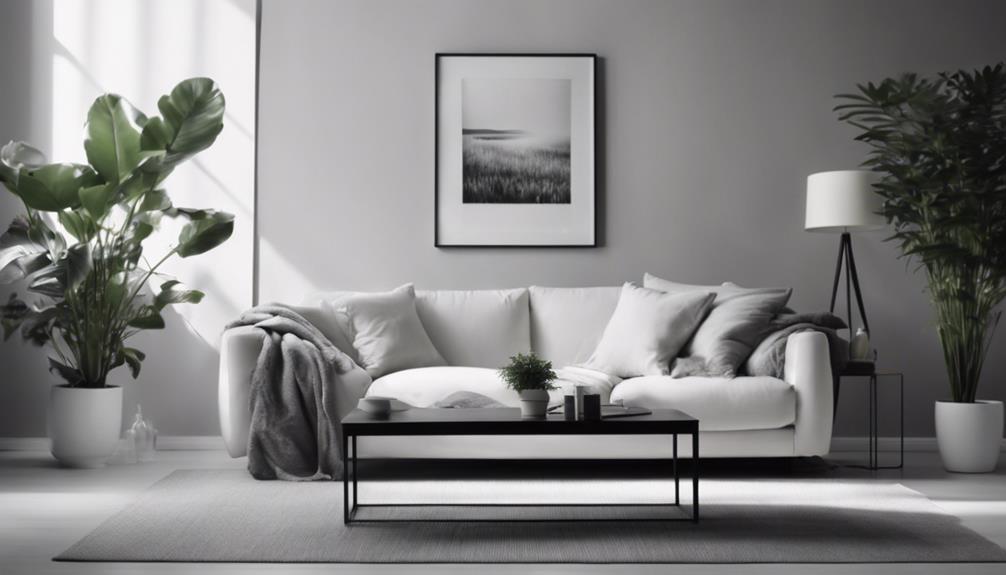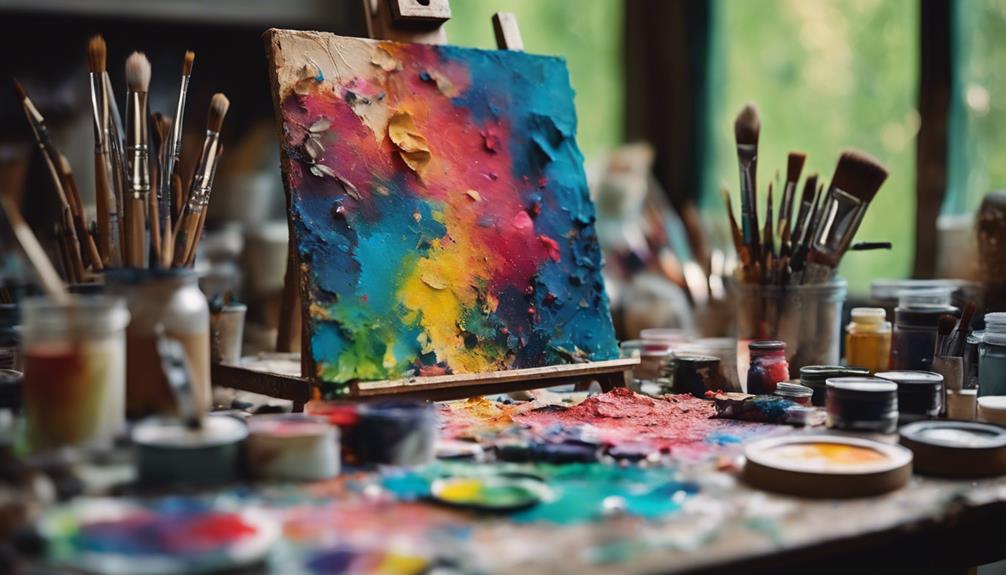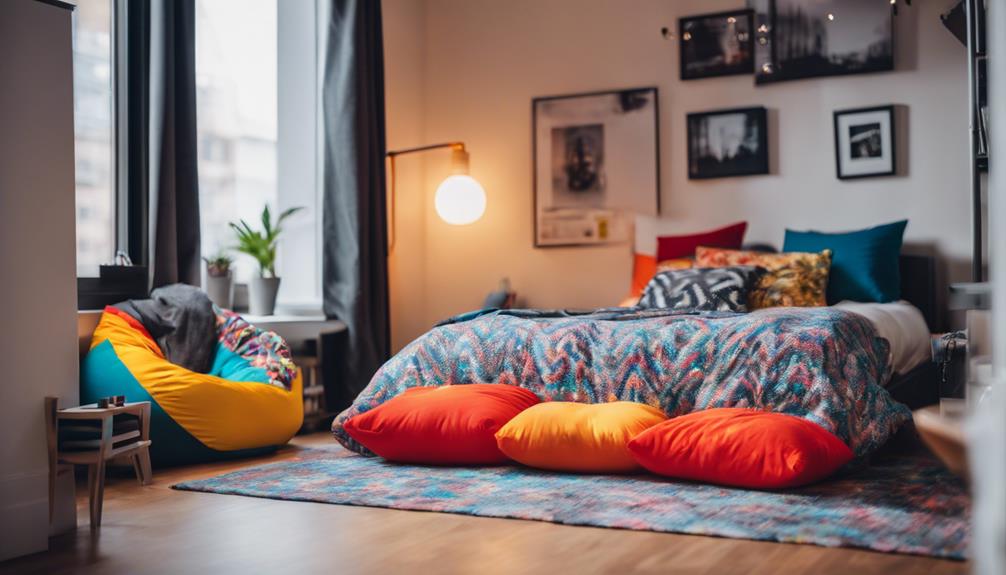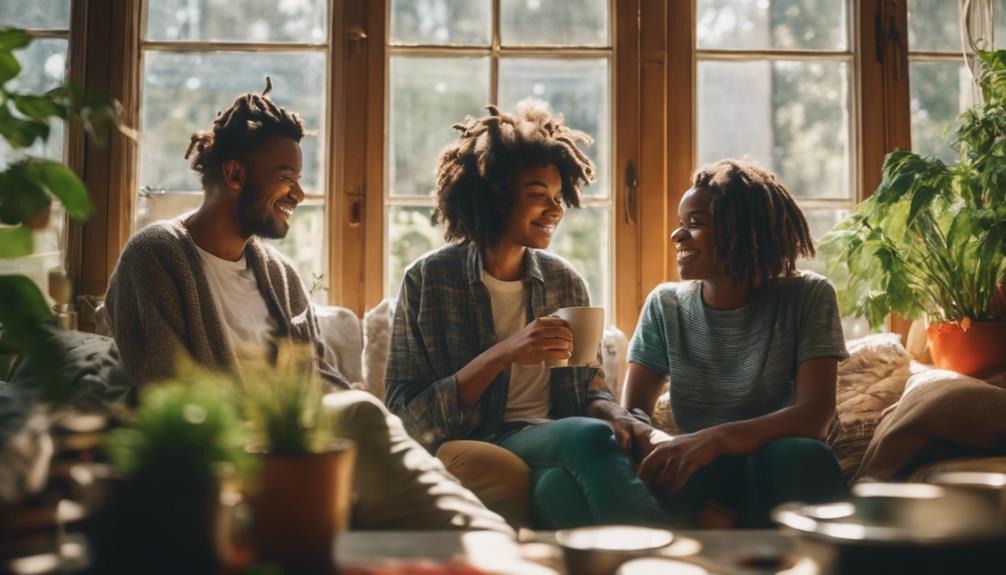Monochrome magic can instantly transform your space into a stylish retreat. By choosing a single color and exploring its various shades and tints, you create a cohesive yet dynamic atmosphere. Mixing lighter and darker tones adds depth, while incorporating different materials like linen, velvet, and leather keeps things interesting. Remember, the right color can influence the mood—warm tones energize, while cool ones promote calmness. Use neutrals for visual relief to enhance your primary color without overwhelming the space. Ready to elevate your home? Stick around to explore more ways to reveal the full potential of monochrome design.
Understanding Monochrome Design
Monochrome design revolves around the use of a single color throughout a space, allowing you to create a striking visual impact by incorporating various shades and tints.
This approach means you'll focus on one hue, exploring its range from light to dark. For instance, if you choose blue, you might use cerulean, lapis lazuli, cobalt, and navy to craft depth and dimension.
It's crucial to avoid an overly matchy-matchy look; instead, embrace diversity within your chosen color. By mixing different shades, you can maintain a cohesive yet dynamic atmosphere.
Enhancing Visual Interest
To keep a monochromatic space engaging, you can play with various shades and textures of your chosen color, ensuring that each element contributes to a dynamic visual experience.
Mix lighter and darker tones to create depth, while incorporating different materials like linen, velvet, or leather. This contrast adds richness and keeps the eye moving.
Don't shy away from adding quirky accent pieces; a unique sculpture or a patterned throw can break the monotony.
Balance bold shades with softer ones to maintain harmony and interest.
Color Psychology and Mood

Choosing the right color can greatly influence the mood and atmosphere of a space, making it essential to contemplate how different hues affect your emotions and activities.
For instance, warm colors like red and orange can energize a room, while cooler tones like blue and green promote calmness. Understanding these effects allows you to tailor your environment to suit your needs.
- Red: Increases energy and excitement, perfect for social spaces.
- Blue: Evokes tranquility, ideal for bedrooms or relaxation areas.
Effective Color Application
Effective color application involves strategically selecting and placing shades within a space to enhance its overall aesthetic and functionality.
Start by choosing a dominant color and incorporate various shades, tints, and tones to create depth. Use softer colors on larger surfaces, like walls, to maintain a calming atmosphere, while reserving bolder hues for accents, such as throw pillows or artwork. This balance keeps the space engaging without overwhelming it.
Don't forget to mix in different textures—like smooth, glossy finishes against matte surfaces—to add interest.
The Role of Neutrals

Neutrals play an essential role in monochromatic design by providing visual relief and allowing your chosen color to truly shine. By integrating blacks, whites, and grays, you can enhance the overall aesthetic without overwhelming the space.
Neutrals create balance and let your primary color take center stage, making the design feel cohesive and inviting.
Consider these tips when incorporating neutrals:
- Use whites to brighten and open up smaller spaces.
- Incorporate blacks for depth and drama, adding sophistication to the palette.
With the right neutrals, you can transform your monochromatic space into a fascinating environment that feels both intentional and harmonious.
Frequently Asked Questions
Can I Use Monochrome in Small Spaces Effectively?
Yes, you can effectively use monochrome in small spaces. By incorporating various shades and textures of one color, you'll create depth and interest, making the area feel larger while maintaining a cohesive, stylish look.
How Do I Choose the Right Monochrome Color for My Style?
To choose the right monochrome color for your style, consider your mood, explore shades, mix textures, and balance bold accents. Let your space reflect your personality while maintaining visual interest and harmony throughout.
What Are Common Mistakes in Monochromatic Decorating?
When decorating monochromatically, avoid overly matchy-matchy looks, and don't forget to mix textures and shades. Ignoring balance between bold and soft tones can lead to a dull or overwhelming space. Keep it interesting!
How Can I Incorporate Artwork in a Monochromatic Room?
To incorporate artwork in a monochromatic room, choose pieces that feature different shades or textures of your main color. This adds dimension and interest, ensuring your artwork complements rather than competes with the overall design.
Are There Any Seasonal Considerations for Monochrome Design?
When considering seasonal changes, you can adapt your monochrome design by introducing seasonal shades, textures, and accents. Lighter tones work for spring, while richer hues enhance warmth in fall. Keep your space dynamic and engaging throughout the year.
How Can Monochrome Magic Transform My Bedroom with Cluttercore Charm?
Unleash the power of monochrome magic to transform your bedroom cluttercore charm. Incorporate black and white elements, minimalist decor, and sleek furniture for a chic and clutter-free space. Embrace the simplicity and elegance of monochrome design to create a stylish and serene atmosphere in your bedroom.
Conclusion
So, you thought monochrome was just about sticking to one color, huh? Well, surprise! It's a vibrant adventure waiting to unfold in your space.
By embracing shades, tints, and textures, you can create a dynamic environment that feels anything but one-dimensional.
As you play with color psychology and introduce neutrals, you'll discover that simplicity can be the ultimate sophistication.
Immerse yourself in the magic of monochrome, and watch your home transform into a stunning, cohesive sanctuary!










